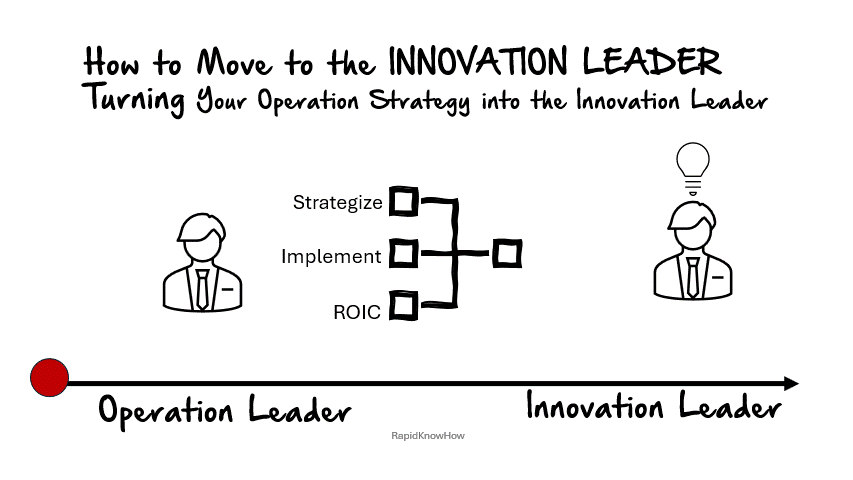The transition from an operational leader to an innovation leader is a significant one, requiring a shift in mindset, skills, and approach. It’s not just about managing day-to-day operations efficiently; it’s about envisioning the future, fostering creativity, and driving change. But why should one consider making this move? And how can it be done effectively? Let’s delve into these questions.
Why Move from Operational Leader to Innovation Leader?
In today’s fast-paced, ever-evolving business landscape, innovation is no longer a luxury; it’s a necessity. Companies that fail to innovate risk becoming obsolete, overtaken by more agile competitors who are better able to adapt to changing market conditions and customer needs.
As an operational leader, you’re adept at managing processes, ensuring efficiency, and delivering consistent results. These are valuable skills. However, they’re not enough to ensure long-term success and growth. To do that, you need to be able to generate new ideas, identify opportunities for improvement or disruption, and implement changes that will deliver value to your customers and your business. This is where the role of the innovation leader comes in.
Innovation leaders are visionaries. They’re able to see beyond the status quo and imagine what could be. They’re also risk-takers, willing to experiment with new ideas and approaches even if there’s no guarantee of success. And they’re change agents, able to inspire and motivate others to embrace new ways of doing things.
By moving from an operational leader to an innovation leader, you can help your company stay ahead of the curve, drive growth, and create a culture of continuous improvement and learning.
How to Move from Operational Leader to Innovation Leader?
1. Crafting Your Innovation Strategy by Learning from Leading Companies
The first step in becoming an innovation leader is developing a clear innovation strategy. This should outline your vision for innovation within your company: what you hope to achieve, how you plan to do it, and how you’ll measure success.
Look to leading companies for inspiration. How do they foster innovation? What strategies do they use? What can you learn from their successes and failures? Use these insights to inform your own strategy.
2. Implementing Your Innovation Strategy Fast
Once you have a strategy in place, it’s time to put it into action. This requires a willingness to take risks and experiment with new ideas. It also requires agility: the ability to move quickly, adapt to changes, and pivot when necessary.
Remember, innovation isn’t just about coming up with new ideas; it’s about implementing them. As an innovation leader, your role is not just to generate ideas but also to champion them, ensuring they’re given the resources and support they need to come to fruition.
3. Creating Profitable Results and Sustained ROIC
Innovation isn’t just about being creative; it’s about delivering results. As an innovation leader, you need to ensure that your innovation efforts are driving growth and delivering a return on investment.
This means constantly monitoring and measuring the impact of your innovation initiatives. Are they leading to improved products or services? Are they resulting in cost savings or increased efficiency? Are they helping you gain a competitive edge? If not, it may be time to reassess and adjust your strategy.
Conclusion
Moving from an operational leader to an innovation leader is a challenging but rewarding journey. It requires a shift in mindset, a willingness to take risks, and a commitment to driving change. But with the right strategy in place, the rewards can be significant: increased competitiveness, growth, and long-term success for your company. So why not take the leap and embrace the role of the innovation leader? Your company’s future may depend on it.




